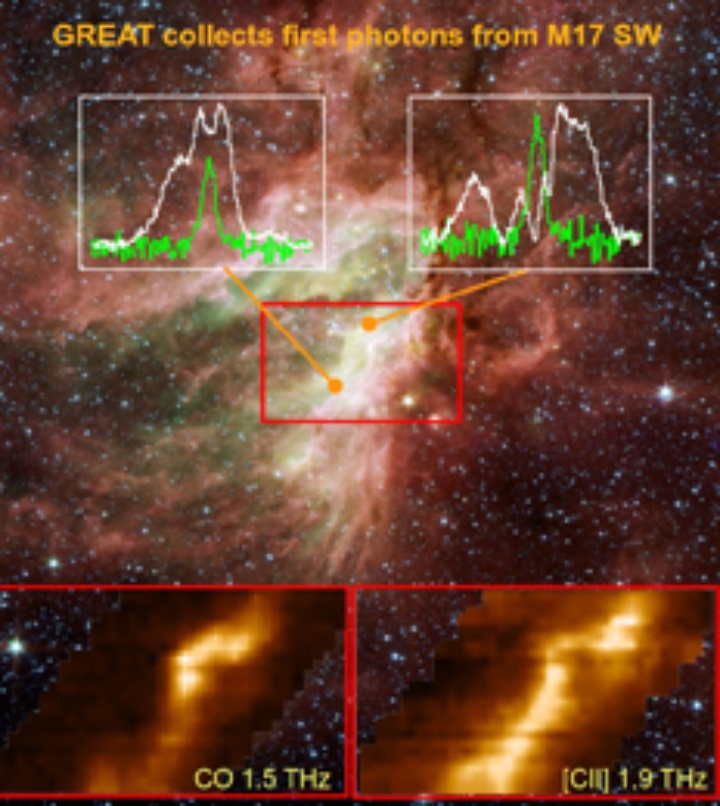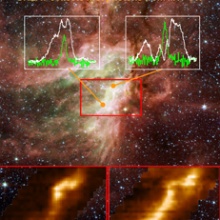On April 6th 2011, German scientists carried out their first astronomical observations on board the Stratospheric Observatory for Infrared Astronomy, SOFIA. A joint project between NASA and the German Aerospace Center (Deutsches Zentrum für Luft- und Raumfahrt; DLR), SOFIA is the world’s only operational airborne observatory. SOFIA flies at altitudes higher than 10 kilometres and thus is able to perform observations that are not possible with ground based telescopes, which are hindered due to absorption by water vapour. For the German partners SOFIAs operation is coordinated by the “ Deutsches SOFIA Institut” of the University of Stuttgart.
When on April 6th 2011 at 6.40 local time (15.40 CEST) SOFIA touched ground again at its home base, the Dryden Aircraft Operations Facility (DAOF) in Palmdale, California, Rolf Güsten and his team had successfully concluded their first science flight with GREAT - the German Receiver for Astronomy at Terahertz Frequencies. The instrument had pointed, among others, at IC342, a prominent intermediate spiral galaxy in the constellation Camelopardalis, and at the Omega Nebula (M17), a site of actively forming massive stars 5000 light-years from Earth. For both sources, the radiation from ionized carbon at 1.9 THz and high-rotational transitions of warm carbon monoxide were measured, demonstrating the instruments’s ability to probe the interstellar medium in the environments of newly formed massive stars. Rolf Güsten (Principal Investigator of GREAT) rejoices at the success: “These very first spectra are the reward for investing several long years into cutting edge technology developments, and underline the scientific potential of airborne FIR spectroscopy. The large collecting area of GREAT’s 2.7-m diameter telescope together with an enormous progress in Terahertz technology allows a 100 times faster data collection compared to earlier experiments – opening a new pathway for unique scientific experiments.”
GREAT observed the strongest emission lines cooling the interstellar medium. The balance between heating and cooling processes regulates the temperature of the interstellar medium, thereby controlling the initial conditions for the formation of new stars. Co-Investigator Jürgen Stutzki from Cologne University explains: „The ionized carbon line, excited by the strong ultraviolet radiation from newly born stars, gives us unique insight into the physical processes and chemical conditions in the stellar nurseries. SOFIA will help to obtain a significant insight into how young stars form and change the clouds they were born in.”
After these first observing flights with GREAT the observatory will be opened for astronomers
outside the project. “Astronomers from all German institutes could apply for scientific
observations with SOFIA during summer 2011. They will use either GREAT or the US Faint Object
InfraRed-CAmera for the SOFIA Telescope, FORCAST”, explains Prof. Alfred Krabbe, Head of the DSI at
the University of Stuttgart.
Alois Himmes, SOFIA Project Manager at DLR is quite pleased: “This first scientific flight of
GREAT is the beginning of German-American scientific collaboration on SOFIA. We are confidently
looking forward to the upcoming routine operations.”



